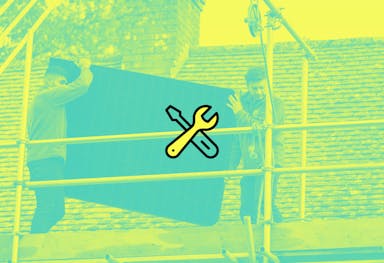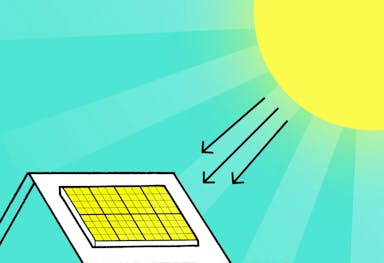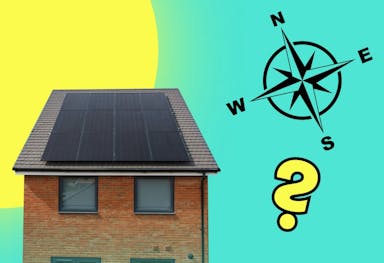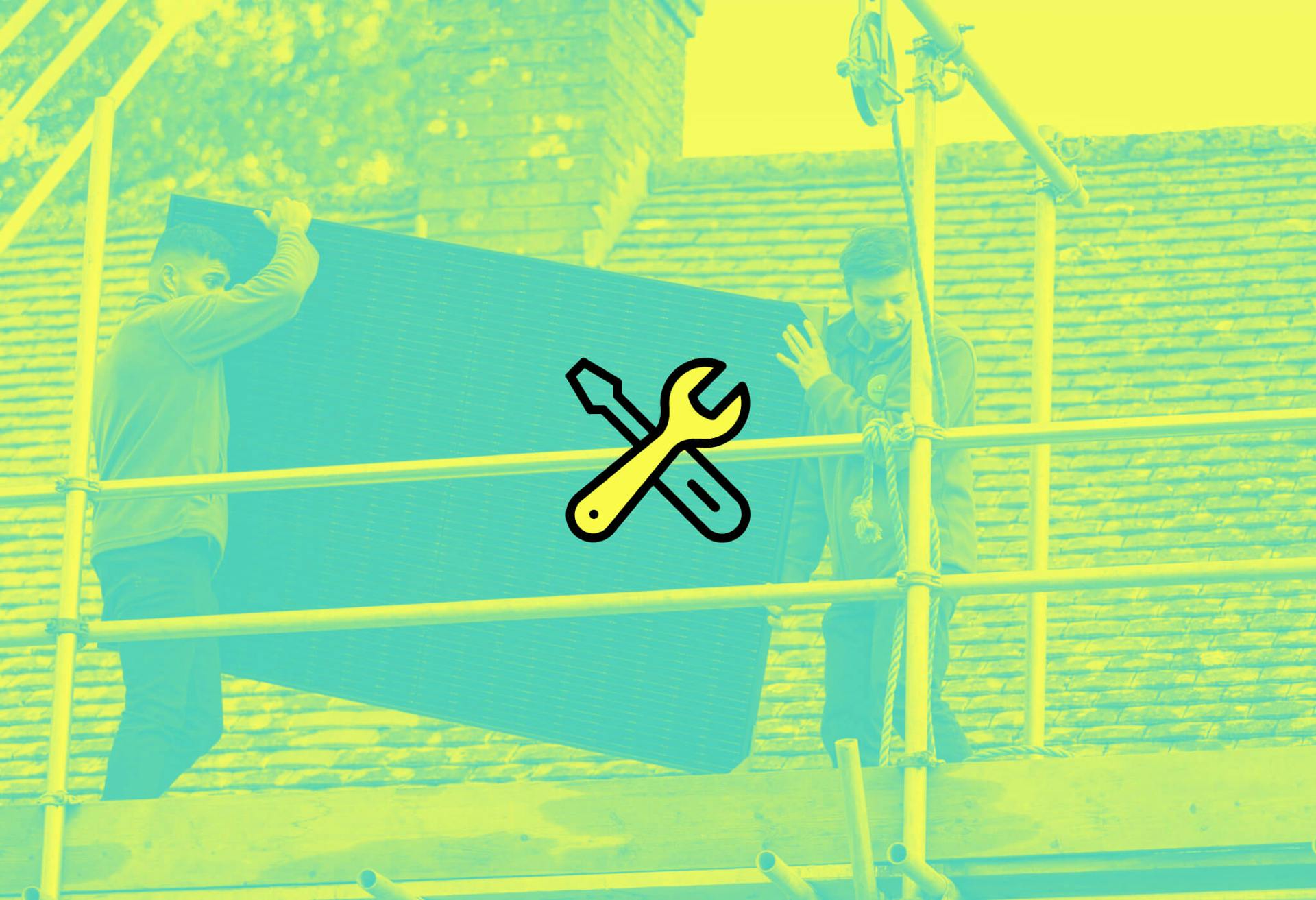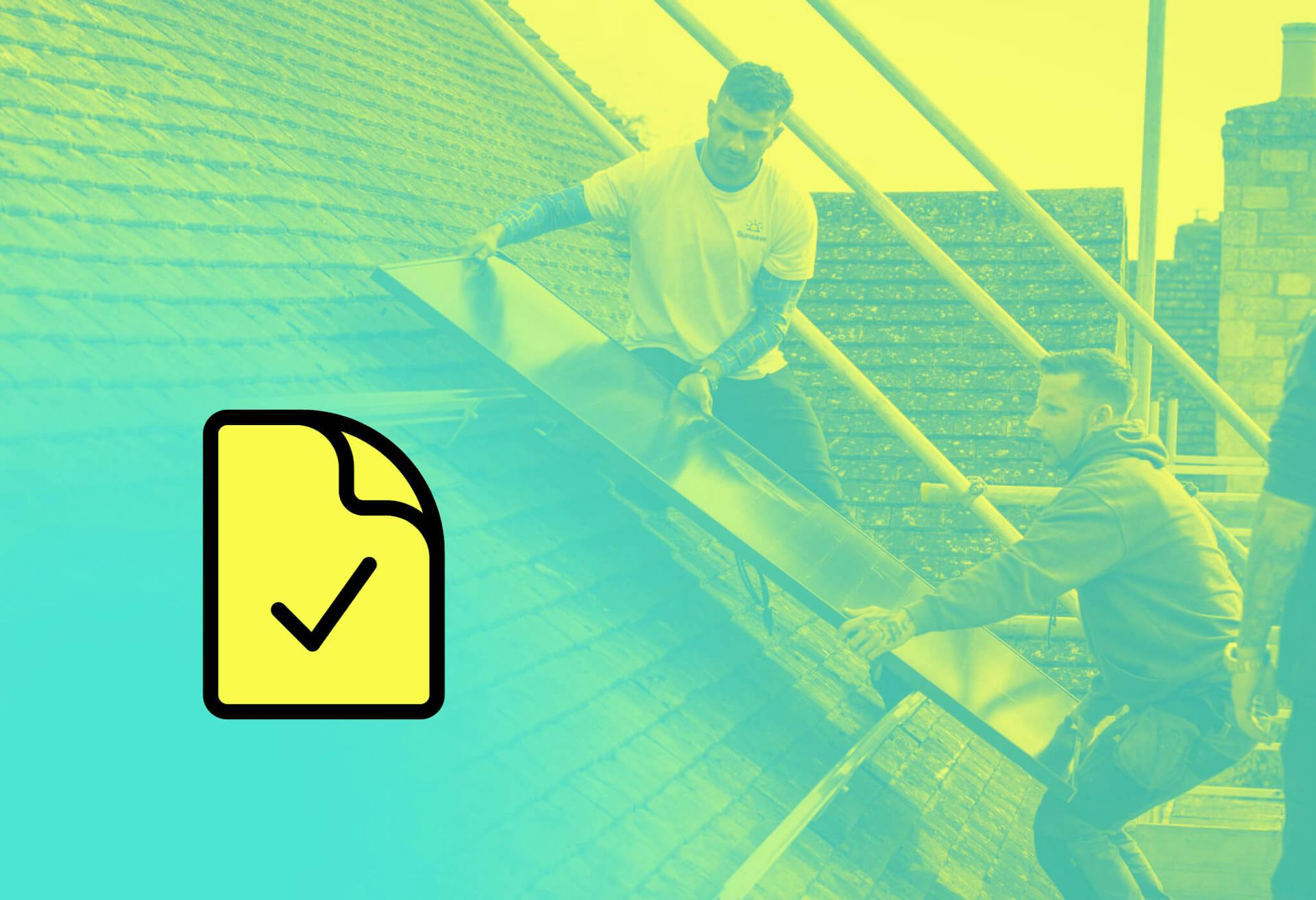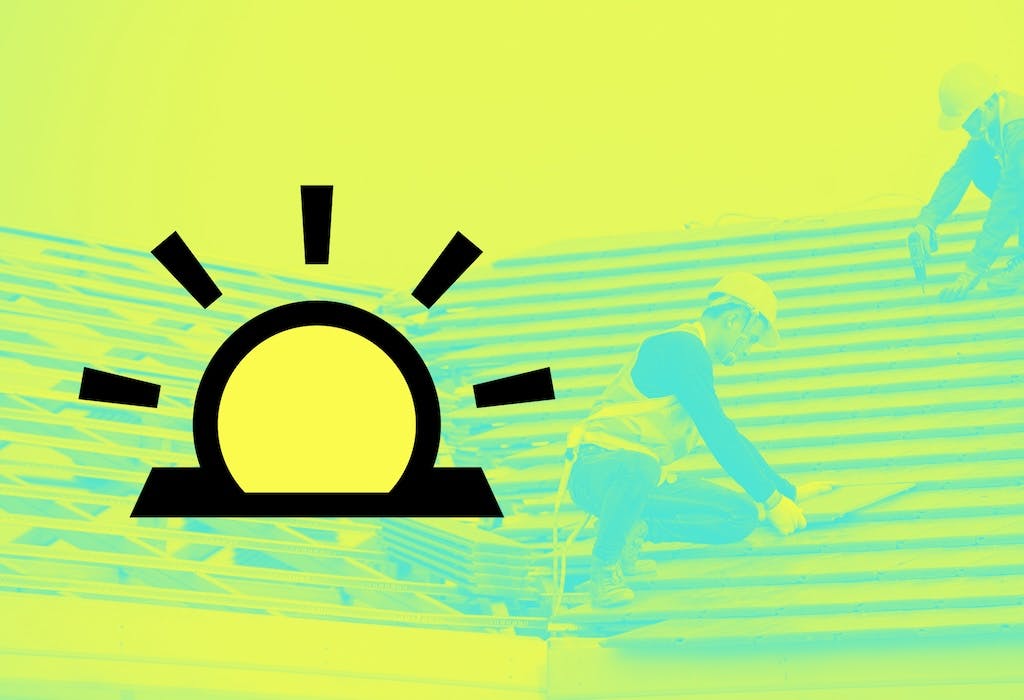- Solar advice hub
- Installation
- Is my roof suitable for solar panels?
Is my roof suitable for solar panels?
Here's how an installer will decide if your roof is suitable for solar panels, including assessing its direction, usable space, and loft.


Why you can trust our content
We know that the solar industry is full of misinformation, but we only use reliable sources, including:
- Our experienced solar experts, installers and system designers
- Our own database of solar & battery system designs
- Authoritative bodies like MCS and the UK government




Calculate savings
What kind of home do you live in?
Calculate savings
What kind of home do you live in?
Roof suitability for solar: at a glance
Before you get solar panels, you’ll want to know whether your roof is ready and able to support them.
Thankfully, most residential roofs in the UK are strong enough and pitched at a decent enough angle – and most other obstacles can be navigated.
In this guide, we’ll run through the various attributes that can define a roof’s suitability for solar panels, including its direction, angle and condition – though you should leave the final decision up to a qualified professional.
If you would like to see how much you could save by getting a solar & battery system at no upfront cost, just answer a few quick questions below and we’ll provide an estimate.
Find out how much you can save
What kind of home do you live in?
How to tell if your roof is suitable for solar panels
There are several areas you should consider in order to gain an initial idea of whether your roof might be suitable for solar panels.
It's certainly worth considering your roof's size, angle and direction, tiles, and loft space, as well as the amount of shading on it. We'll go into all of that and more below.
Ultimately though, you should leave the decision up to a certified installer, as they’ll be able to assess the specific characteristics of your roof, spot any issues, and potentially solve them.
They’ll also be able to tell you whether a solar panel system would be unsafe or financially unwise on your roof.
1. Does your roof face the right direction?
Solar panels can be a worthwhile investment whatever direction they face, but some directions are more suitable than others.
A south-facing roof is the ideal scenario in the UK, followed by a roof that faces east or west.
Roofs that face north don’t always have the best reputation in this department, but technological advances have made it viable for many homeowners to profit from a north-facing solar panel system (particularly if it’s north-east or north-west facing).
Verified expertI’ve installed a lot of east-west solar panel arrays in the past; they’re pretty popular. These systems aren’t as effective as south-facing ones, but they still produce a lot. East-facing arrays perform really well as the sun rises in the morning, whereas west-facing arrays hit peak performance after noon.
Tom Brehme
Technical Manager
Tom has worked in residential solar installation for more than a decade, and is a fully qualified electrician.
2. Does your roof have enough space?
Your roof will need to be large enough to fit a suitable number of solar panels, as there’s rarely much point putting just two or three panels up there.
The average solar panel takes up 2m², and your installer should leave reasonable space on each side of the array, as well as 3cm between every panel (to learn more, check out our guide to solar panel sizes).
In addition, your installer will need to leave space around any extra objects on your roof, such as a chimney, skylight, or vent pipe.
So if you’re planning to install a 3 kilowatt-peak (kWp) system – for example – you’ll need around 23m² of roof space, as that would be about seven or eight panels.
Or if you’re considering getting a larger array, you’ll naturally require more roof space. For example, a 5.2kWp array would need about 38m².
And if you have a dormer on your roof, none of the space it takes up counts as usable space, as dormers are not usually designed to support the weight of panels.
Households that don't have quite enough space on their main roof should look at putting some panels on a garage roof.
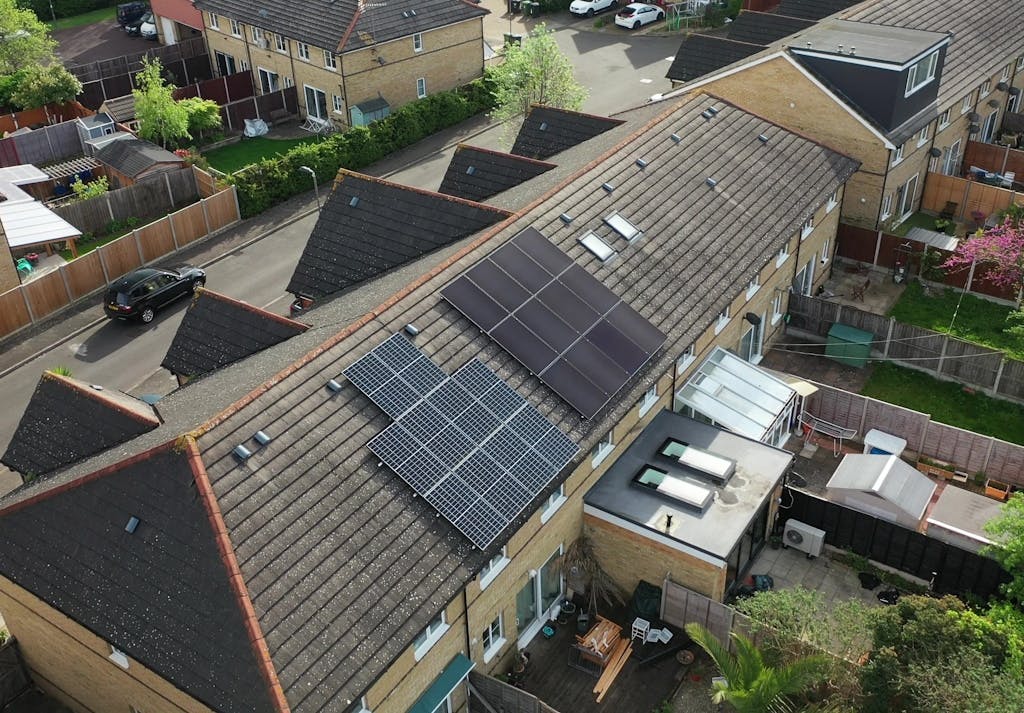
3. Does your roof experience any shading?
The most common obstacle for prospective solar panel owners is shading – after all, the less sunlight your system receives, the less electricity it can produce.
If trees are the issue, it’s a good idea to work out how long they spend casting shade over your roof each day. It’s best to leave this to a professional installer though, as they’ll be able to accurately assess this for you while designing your system.
A short amount of time in the shade may not be a problem at all – and if they’re more obstructive, consider whether you could trim them back a bit.
Buildings that cast shade on your roof are more difficult to deal with.
Make sure you also look at your roof itself, since objects like chimneys, vent pipes, flue pipes, gable features, and dormers can all cause shading.
Thankfully, if your rooftop experiences a significant level of shading, your installer should be able to use optimisers or microinverters to solve the issue.
Most solar panels also have in-built technology called bypass diodes that deal with shading to a decent extent.
To learn more, check out our detailed guide to solar panel shading.
Verified expertIf we identify significant shade on a rooftop when we’re designing a system, we’ll consider how this impacts the expected output and energy bill savings. If it makes a big difference, we’ll think about potential solutions (e.g. microinverters), and weigh up the additional cost against the benefits.
Tom Brehme
Technical Manager at Sunsave
Tom has worked in residential solar installation for more than a decade, and is a fully qualified electrician.
4. Is your roof at the correct angle?
The ideal angle for rooftop solar panels in the UK is around 40°.
Many roofs are in this range, which allows the panels they host to capture as much sunlight as possible.
Many households that have roofs with a slightly higher or lower angle can also save plenty on their electricity bills, but flat roofs – including those on dormers – are more problematic.
Installers shouldn’t drill into a flat roof, as it may cause leaks when rain falls, so they’ll look at ballasting your panels instead – but ballasts weigh 80kg per panel, which makes a system about five times heavier.
The great majority of UK roofs can support the typical weight of a solar array, which is around 200kg, but can’t necessarily hold a tonne.
Solar panels on a flat roof can also cast shade on each other, meaning they need to be spaced out more – which also reduces the number of panels you can have on your roof.
Verified expertIt’s difficult to verify whether a flat roof is strong enough for solar panels, as we’re not able to see the rafters. These systems will be heavy because they need ballasts to weigh them down, and if the roof isn’t structurally sound then you’ll end up with a pretty dangerous scenario.
Tom Brehme
Technical Manager at Sunsave
Tom has worked in residential solar installation for more than a decade, and is a fully qualified electrician.
5. Does your roof have a loft space underneath it?
It’s much easier to get rooftop solar panels installed if you have a loft space.
This way, installers can look at the underside of your roof beforehand to check its structure and pinpoint where the rafters are, then look afterwards to make sure the felt isn’t torn and the bolts have gone straight into the rafters.
If you have a loft conversion, it’ll ideally have an eaves hatch that’ll give installers a view of the structure, rafters, and felt. If you don’t have an eaves hatch, a blueprint or diagram of your roof – or, in rare cases, a series of photos – may also be sufficient.
Households that don’t have either may need to pay for a survey that can involve professionals cutting into the loft’s ceiling.

The difficulty with vaulted ceilings
If you have a vaulted loft ceiling that completely covers your rafters, this can make installation tricky.
Engineers won’t be able to assess the roof's structural safety or conduct post-installation checks, which means expensive, long-term damage could happen without anyone knowing.
They won't be able to guarantee that the panels' mounting structure is connected to the rafters, that the rafters haven't cracked on impact, or that the felt is intact.
For these reasons, most installers generally won't put solar panels on homes with a vaulted loft ceiling.
If you would like to see the savings you could get with a solar & battery system from a top-tier installer, click the button below. Just answer a few quick questions, and we’ll provide an estimate.
Find out how much you can save
What kind of home do you live in?
6. Is your roof in good condition?
It’s very important that your roof is in good condition before you get solar panels.
If your roof is on its last legs, the solar installation process could be very unsafe for the installers.
Additionally, if you decide to kick the can down the road and deal with roof repairs further down the line, it’s a lot of expensive hassle to have your solar panels removed and then reinstalled.
Signs of a risky roof include: broken tiles, lots of moss growth on the tiles, water ingress, missing felt, and sagging.
7. Does your loft have spray foam insulation?
Spray foam insulation is liquid plastic that can be applied via a spray gun to floors, walls, and ceilings in your home, to protect against the cold and keep heat inside.
It's often used in UK lofts to fill corners and difficult-to-reach areas that would be hard to cover with solid insulation materials like fibreglass.
It'll also go on the underside of your roof, between the rafters, which could potentially prevent an installer from being able to check your roof felt.
They therefore wouldn't know what condition your felt is in, and so wouldn't be able to confidently rule out any leaks in the future, meaning they’d be reluctant to go ahead with the install.
8. What type of tiles does your roof have?
Some roof tiles make solar panel installations a lot trickier. Your installer will likely still be able to go ahead, but it might take longer and be more expensive.
If your tiles have a consistent size and shape – for instance, if they’re concrete or clay tiles – then you’re all set.
However, some roofs come with tiles made of materials like Yorkshire stone or Cumbrian slate, which vary in size, depth, and weight.
These tiles are usually bigger and heavier than concrete and clay tiles, and overlap with each other, making them difficult to lift. As a result, they require an installer to take more time and use additional mounting equipment.
This can cost more, which may make a solar panel installation less viable for some homes.
Next steps
As long as your roof is pitched, large enough, and has enough unshaded space, it should be suitable for solar panels.
The large majority of UK roofs are more than capable of supporting solar panels for as long as you need them to.
The best way to ensure your installation goes smoothly and leaves your roof unblemished is to get an accredited, certified, well-reviewed installer like Sunsave.
If you’re wondering how much a properly installed solar & battery system could save you, answer a few questions below and we’ll provide you with an estimate.
Find out how much you can save
What kind of home do you live in?
Roof suitability for solar: FAQs
Related articles

Written byJosh Jackman
Josh has written about the rapid rise of home solar for the past six years. His data-driven work has been featured in United Nations and World Health Organisation documents, as well as publications including The Eco Experts, Financial Times, The Independent, The Telegraph, The Times, and The Sun. Josh has also been interviewed as a renewables expert on BBC One’s Rip-Off Britain, ITV1’s Tonight show, and BBC Radio 4 and 5.

